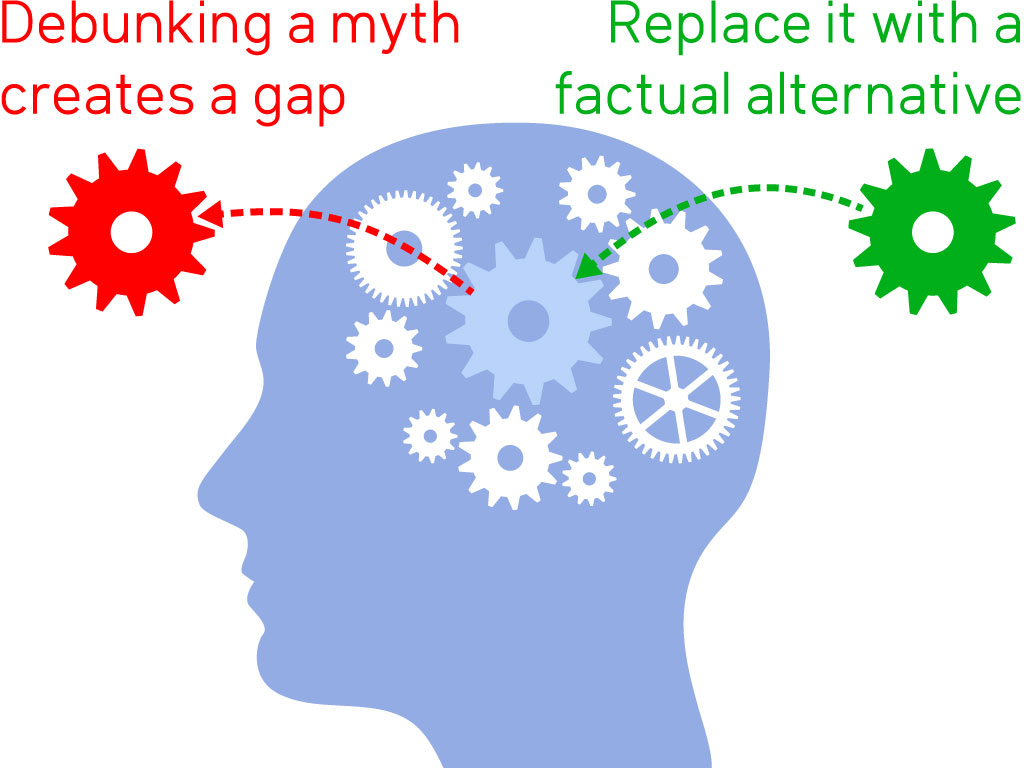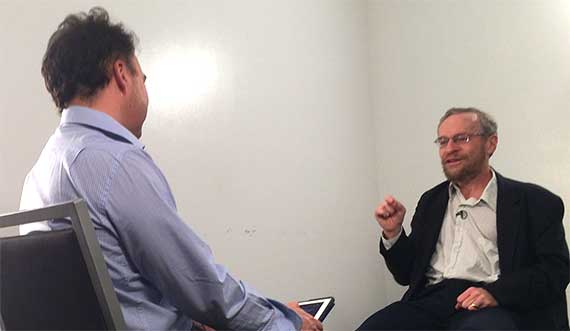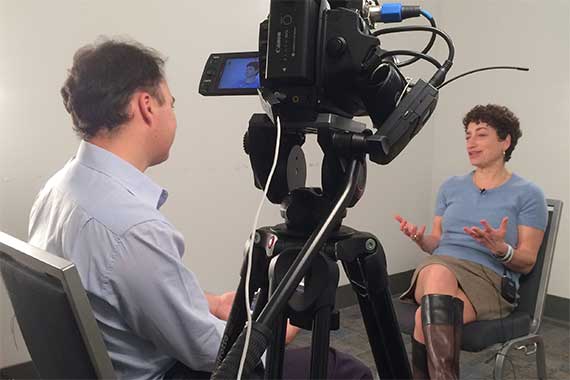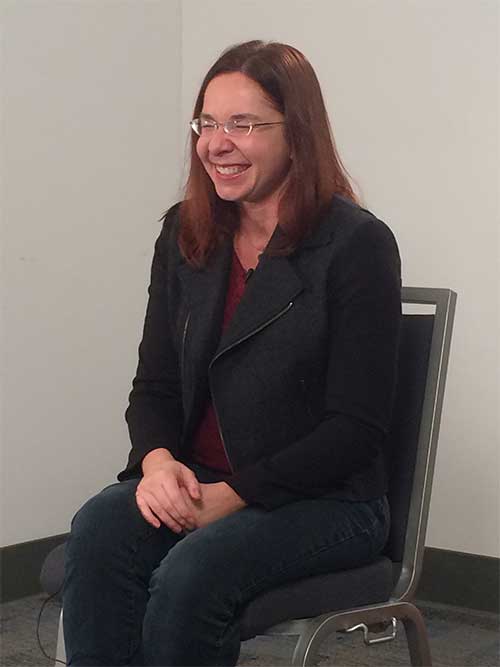My AGU talk on tackling climate myths in a free online course
This post is based on an invited presentation I gave at the 2014 American Geophysical Union Fall Meeting in San Francisco. The talk was titled Applying Agnotology Based Learning in a MOOC to Counter Climate Misconceptions. In it, I explained the approach taken in our upcoming MOOC (Massive Open Online Course) titled Making Sense of Climate Science Denial.
The slides for my talk are available in PDF form.
For the last few years, I’ve been talking to people about agnotology-based learning. Usually they blink or stare at me with blank eyes, responding with “agno-what now?” I explain that agnotology is the study of how and why we don’t know things, coming from the word agnostic. For example, studying the negative influence of misinformation about climate science.
 In 2009, Dan Bedford coined the term “agnotology-based learning”. I met Dan a few years ago at a previous AGU Fall Meeting. We got on famously, sharing similar attitudes to climate communication and how to address misinformation. I was especially impressed with his approach to teaching climate science by debunking myths. As well as teach the scientific concepts, this approach also equipped the students with the critical thinking skills needed to identify the misleading techniques in misinformation.
In 2009, Dan Bedford coined the term “agnotology-based learning”. I met Dan a few years ago at a previous AGU Fall Meeting. We got on famously, sharing similar attitudes to climate communication and how to address misinformation. I was especially impressed with his approach to teaching climate science by debunking myths. As well as teach the scientific concepts, this approach also equipped the students with the critical thinking skills needed to identify the misleading techniques in misinformation.
Since then, I’ve continued to investigate agnotology-based learning, even co-authoring a paper in the Journal of Geoscience Education with Dan and Scott Mandia. When I began developing a MOOC based on the agnotology-based learning approach, naturally I was keen for Dan to be involved. This week at AGU, we recorded Dan’s MOOC lecture. Some of the SkS team think I have a bit of a bromance going with Dan but I think it’s just a strong working relationship with a healthy dose of mutual appreciation!
Why is addressing misinformation important? This quote from Jonathan Osborne sums it up:
Comprehending why ideas are wrong matters as much as understanding why some ideas may be right.
Education isn’t just about downloading new information into student’s heads. We also need to correct misconceptions, which interfere with new learning. Some misconceptions are especially corrosive. For example, misperceptions about the scientific consensus on human-caused global warming can have flow-on effects such as lower acceptance that climate change is happening and decreased support for policies to mitigate global warming.
In order to effectively remove misconceptions, we need to understand what goes on under the hood when we debunk a myth. As people receive information, they build up a model of how the world works. All the cogs fit together to build an interlocking picture of how the world works.
If you tell someone that a part of their model is wrong, you create a gap in their mental model. But people prefer an complete, false model to an incomplete, accurate model. Just like a weed, the myth sneaks its way back into the model (psychologists call this the Continued Influence Effect).
So when you’re debunking a myth, it’s crucial that you fill the gap you created. Replace the myth with an alternative fact. All this psychological theory can be summed up concisely in the golden rule of debunking: fight sticky myths with stickier facts.

But that’s only half the job. As well as explain why the fact is true, you also need to explain why the myth is wrong. One way to do this is to explain the technique that the myth uses to distort the science. The techniques in most climate myths fall into one of the following five categories: Fake Experts, Logical Fallacies, Impossible Standards, Cherry Picking and Conspiracy Theories (I use the acronym FLICC to remember them).

Making Sense of Climate Science Denial debunks 50 of the most common climate myths, adopting the structure recommended by the psychological research. We start each debunking by explaining the science: the “factual alternative”. Then we explain how that science is distorted by the myth, examining the fallacy within the myth.
An important (and exciting) part of our MOOC will be interviews with some of the leading climate scientists from all over the world. We’ll feature explanations of the science and debunkings of the myths from the world’s greatest climate communicators. Richard Alley’s response to the “scientists are in it for the money” myth was such an extraordinary, sticky debunking, all I could say in response was “wow!”

As well as learn about climate change, we also examine how people think about climate change. Understanding the psychology of science denial is crucial to understanding why human-caused global warming, having achieved 97% consensus among climate scientists, is still a public controversy. Another important part of this story is the role that the Merchants of Doubt play, as explained by Naomi Oreskes.

And lastly, here’s a photo from our interview with Katharine Hayhoe, who was recently named one of Time Magazine's 100 most influential people, which always puts a smile on my face!

You can sign up free for our MOOC now (it launches in April 2015) at http://sks.to/denial101x.
Posted by John Cook on Saturday, 20 December, 2014
 In 2009, Dan Bedford coined the term “agnotology-based learning”. I met Dan a few years ago at a previous AGU Fall Meeting. We got on famously, sharing similar attitudes to climate communication and how to address misinformation. I was especially impressed with his approach to teaching climate science by debunking myths. As well as teach the scientific concepts, this approach also equipped the students with the critical thinking skills needed to identify the misleading techniques in misinformation.
In 2009, Dan Bedford coined the term “agnotology-based learning”. I met Dan a few years ago at a previous AGU Fall Meeting. We got on famously, sharing similar attitudes to climate communication and how to address misinformation. I was especially impressed with his approach to teaching climate science by debunking myths. As well as teach the scientific concepts, this approach also equipped the students with the critical thinking skills needed to identify the misleading techniques in misinformation. 





